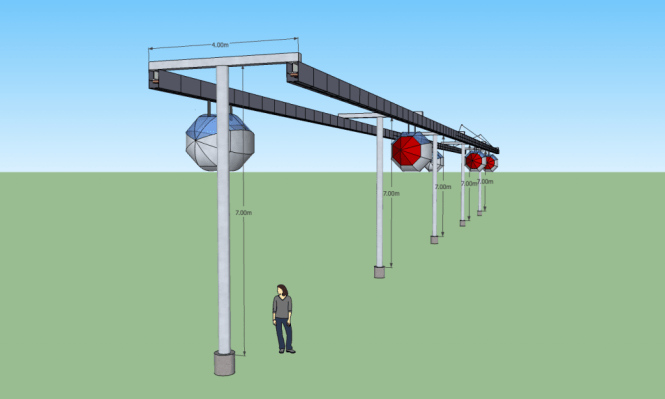Aaron Patzer, the founder of Mint, has a new project that he is spending half his time on (he continues to spend the other half as VP of Product Innovation at Intuit, which acquired Mint two years ago for $170 million). His new project is called Swift, and it is his vehicle (if you will) to exlore the feasibility of building a personal maglev vehicle transit system.
“The goal is to see if I can develop a new transportation system to displace cars in most urban and suburban settings,” he told me recently, “with the goal being 5x the speed, and bringing the cost of maglev from today’s costs of $50m / mile down to $4-5m / mile, which would be the same as adding one lane of asphalt/concrete road. Not sure if it will pan out, as I’m deep in the science and simulation phase.”
After a lot of analysis and setting up some simulations, he figures that he can built a system with two-person “pods” hanging underneath maglev rails which will operate at the equivalent of 800 miles-per-gallon, at 3 to 4 times the speed of regular cars. But even that will not be enough to displace cars. He’s concluded that the numbers don’t pan out. And he just shared his findings in an extensive blog post. It has all sorts of details on his concept and how it would work, but here is the conclusion:
While a 3-4x velocity improvement, 800+mpg energy efficiency, and 3-4x reduction in cost over light-rail systems, it’s not enough to displace cars. The future of transportation is still the concrete and asphalt road, for the simple reason that at $17 per tonne of asphalt versus $900 per tonne of steel or $10,000 per tonne of copper, roads are the only thing cheap enough to be ubiquitous in lower density areas. Not even the ultra lightweight track of Swift looks cheap enough to displace roads outside of dense urban areas where, because it uses a much smaller rolling stock (number of vehicles) and can have higher throughput, mass transit is likely a better approach.
If roads are the future, then so is the self-driving car, functioning like an on-demand taxi system, connected into a centralized traffic database to avoid congestion and minimize time, and driven by computers in a platoon formation of 5-10 cars to minimize aerodynamic drag by up to 35%.
It is quite possible the same system-level traffic engineering algorithms developed at Swift can be used in such a self-driving system. That said, Swift PRT as a maglev concept will be abandoned. No track-based system (not maglev, not light-rail or metro systems) can compete with the cost and ubiquity of roads for population densities below 5000 people / km2.
It looks like those self-driving cars Google is developing might not be such a crazy idea after all. I hope Patzer figures it out. These are exactly the kinds of big, world-changing ideas startup founders should be tackling.
